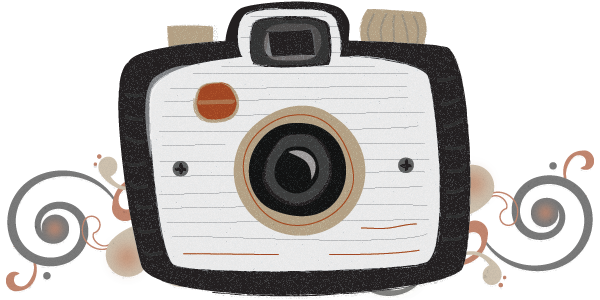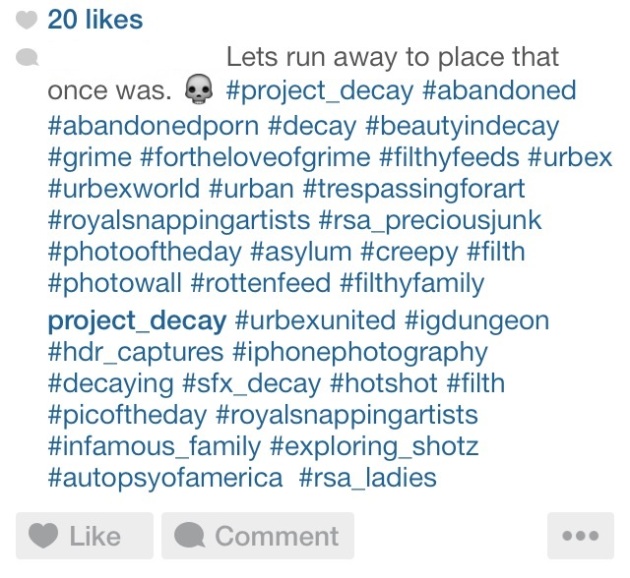In one of my Biology classes I just heard about something that occurred several years ago, but I think it fits well with this class/blog. A scientist by the name of Andrew Wakefield published a study back in 1998 stating that vaccines had been proven to cause autism. The paper was retracted first in 2004 and then in 2010 completely, due to fraudulent research. In the 10+ years time that this study was out, the amount of parents vaccinating their children plummeted significantly because of the accusations to their links with autism. Not only is this a terrible lie and manipulation of science, but it’s crazy how much media can cause people to change their actions. Because this article was published in a journal, people believed it and stopped vaccinating their children. This is a great example how media, in this case journalism, manipulated almost the entire world to believe one thing and how much of an influence it really has. To this day, some parents don’t vaccinate children because they still believe this. We can’t let media run our lives and day by day it seems to be happening.
Category Archives: Erika
Beautiful doesn’t mean perfect
http://www.huffingtonpost.com/2013/12/03/disabled-mannequins-video_n_4379586.html
This doesn’t particularly relate to social media, but I found this video to be very inspirational. An organization for the disabled called Pro Infirmis had several people come in who had disabilities. They took notes on their physical appearance and also their measurements in order to create mannequins based off them. They even placed some of the mannequins in store windows. I think this is important because the media. especially the fashion industry, manipulates people to believe that there is an ideal looks, size, and shape to consider people beautiful. This video is great awareness of how this is almost never true. These people are disabled yet the people viewing the mannequins in the store windows didn’t seem too concerned about it. More things should be done like this in order to make people understand there is no definition of beauty. Everyone is beautiful in their own way.
Facebook History
This doesn’t really have anything to do with manipulation of photographs specifically but it fit into the social media category so I thought I’d share. I’ve seen these kinds of things before, I don’t know who thought of it, but someone decided to make Facebook pages for different countries and have them talk to each other like they were back in the WWI and WWII era. In a way I guess it’s a type of manipulation. Imagine if kids of the future stumble upon this (assuming they still know what Facebook is at this point), they might think countries actually did this during war or something. We obviously know it’s ridiculous and just a joke, but who knows what people of the future might take from this.
Why do we Snapchat?
Our recent discussion in class this past week about Snapchat made me really think about why we do it. I can understand why people think it’s a little strange, sending pictures/videos of yourself making stupid faces or doing dumb things that people can only see for a matter of 10 seconds max sounds kind of silly right? And I agree that it is. However, I think Snapchat provides us with alot of benefits. For example, I’m in a relationship but he lives back where I’m from and I don’t see him as often as I’d like. So whenever I feel like I miss him or am in a bad mood, Snapchat does the trick. There’s debates whether your Snapchat photos ever get deleted and there is some mechanisms that can retrieve your photos, but it costs hundreds of dollars to get access to it. Yes, it’s a strange aspect of technology that I don’t think I’ll ever understand the reasoning behind creating, but it’s fun and harmless, so snap away.
Humans of New York
Humans of New York is a website designed by a man named Brandon who goes around New York and takes photos of just about anybody, with their consent. He often then asks them a question, makes a statement about the person in the photo, or will describe a conversation they had and uses it as a caption for the pictures on the website. What he writes for these caption can be funny, sad, happy, and most of the time really inspiring. Sometimes he even takes pictures of children that he thinks are stylish and uses the caption “Today in microfashion…” Just a few days ago while looking at the site, I saw a picture of a man who was telling his story about his adopted daughter from Ethiopia and how him and his wife are in the process of trying to adopt her brother, Richard. He mentioned how he was struggling because adoption is not cheap. Upon hearing this, Brandon set up a fund called Let’s Bring Richard Home and in the course of a few days over 4500 people donated with a grand total of $83,955 raised for this family. It’s an amazing phenomena how much the internet can connect people and accomplish one thing. If you’ve never seen or heard of Humans of New York, you really should check it out. They also have a Facebook page and an Instagram account, it’s something that can bring a little bit of happiness to your day.
@Tweetacoffee
I was scrolling through ABC news the other day and found this article about Twitter allowing their users to send anyone a coffee through Starbucks. Apparently all you need to do is go to Starbucks website, register with them, and tweet away. You can tweet anyone you follow a $5 gift card and all they need to do is open it on their phone and take it to Starbucks to have it scanned. Bam, there’s your coffee. No cost for them. It’s an interesting idea, and to a fellow coffee addict, it’s very appealing however I wonder if people actually do it. I don’t have a Twitter so I can’t say, but I know Facebook does the same kind of thing with birthdays. If it’s one of your Facebook friends birthdays you can send them Starbucks and Target gift cards. When Facebook gives me this option I usually just overlook it and think “Why would I do that? I’d rather just buy them something.” This idea is new and modernized and I can’t say I’m surprised that it’s come to this. Though it just makes for lazy, antisocial people who would rather spend their time on the internet than just going out to coffee with their friends and buying it for them there in the flesh instead.
Me: Susie bought me coffee today!
Mom: I haven’t seen her in years! How is she?
Me: Oh.. I don’t know she just coffee tweeted me.
If the world ever comes to that kind of conversaton, I will be very sad.
Faking It
Just recently I viewed the Faking It website and went through the all the photographs appearing in the exhibit. The most interesting part of the exhibit that I saw was the so obviously photoshopped pictures. These were some of my favorites.
Lyndon B. Johnson’s really elongated, Pinocchio- like nose: http://www.metmuseum.org/exhibitions/view?exhibitionId=%7b36D81705-241D-4934-AB02-FD7C8DBBB3E5%7d&oid=302003&pg=2&rpp=60&pos=98&ft=*
The decapitated man with the knife: http://www.metmuseum.org/exhibitions/view?exhibitionId=%7b36D81705-241D-4934-AB02-FD7C8DBBB3E5%7d&oid=294774&pg=2&rpp=60&pos=89&ft=*
The man drinking with the moon: http://www.metmuseum.org/exhibitions/view?exhibitionId=%7b36D81705-241D-4934-AB02-FD7C8DBBB3E5%7d&oid=294774&pg=2&rpp=60&pos=89&ft=*
I think I found these the most interesting because they were so exaggerated that it made them kind of humorous and fun to look at. I would make the assumption that the people who did the photo manipulation on these photos weren’t doing it because they thought people would really think Johnson was a long lost brother of Pinocchio or that the moon had a face and could even drink. My guess is that they did it for fun rather to convince people of something.
On the other end of the spectrum however, I found some photographs that didn’t look manipulated at all and I was often wondering to myself when looking at them, “Really? This is photoshopped? It looks pretty real to me.” I had to read the captions in order to be able to figure out what exactly was manipulated. These are some that stumped me most.
The cover of the Saturday Evening Post: This photo was taken of the photographers daughter and the food on the table was inserted in afterwards. I knew that the words were inserted because it’s a magazine but I really couldnt tell that each piece of food was inserted separately- http://www.metmuseum.org/exhibitions/view?exhibitionId=%7b36D81705-241D-4934-AB02-FD7C8DBBB3E5%7d&oid=294813&pg=2&rpp=60&pos=105&ft=*
Fading Away: This is a photo or a “family tragedy” but the photographer threw together 5 different negatives to make one sad image. Just by looking at this I can’t tell that they were just pieced together. I would have assumed that it is a very sad image and the family was in some sort of despair- http://www.metmuseum.org/exhibitions/view?exhibitionId=%7b36D81705-241D-4934-AB02-FD7C8DBBB3E5%7d&oid=302289&pg=3&rpp=60&pos=136&ft=*
I got to thinking what the motivation for manipulation was behind these two photos. Persuasion? Trickery? We may never know. Overall the Faking It exhibit was really interesting to view. It made me really think about the photos I’ve looked at in the past, whether they were in magazines or on the internet, and if they were real or not. If I couldn’t always distinguish fake photographs in a famous fake photo exhibit, how many fake images have I seen in real life that I was tricked by?
IKEAshopped
About a year ago, an issue occurred involving IKEA and their magazines in Saudi Arabia. Apparently, the Saudi Arabian edition of the magazine removed all women from photos because they were showing too much skin. However, they removed women who were fully clothed simply brushing their teeth with their children (the photo below) and even the IKEA employees presenting the magazine was photo shopped out. 
IKEA apologized and as far as I know everything is fine, but this controversy sparked an internet sensation that I find to be pretty humorous. People have taken famous photos and replaced the women in them, such as Hilary Clinton and Marilyn Monroe, with IKEA products instead. It’s very obvious that they are photo shopped, and it is also obvious that no one was doing this seriously, they were just essentially mocking IKEA. People photoshop for the mere fun of photoshopping. I know I got a few good laughs from seeing these photos.
http://petapixel.com/2012/10/04/ikea-catalog-photoshop-controversy-spawns-new-internet-photo-meme/
Don’t do it for the Vine
Most of us know what Vine is. If you don’t use it specifically for posting videos yourself, you’ve most likely seen the Best Vines pages on both Twitter and Facebook. I’ll admit, Vine is a great thing, some of them are hilarious. Others, not so much. Kind of like this guy. I think he might have taken it too far. He attempted to jump over a moving vehicle, and in the end landed himself in an ambulance saying “Don’t do it for the Vine!” But why would you do it ever? I don’t understand why someone would think that was a good idea. Okay, he wants to prove a point and post a cool video but that just backfired. It’s bizarre to me that people would go to these lengths for a social media site. Granted he probably got what he wanted because now he’s the guy who landed himself in the hospital trying to make a Vine and everyone knows his name. But was it really worth it? My guess would be no.
#need #more #followers
#Hashtagging. An act that Twitter, Instagram, and now even Facebook use for people to be able to connect with other people who are hashtagging the same things. When you use hashtags on social media sites, you can look at anything that anyone else in the world posted using that hashtag as well. Don’t get me wrong, I’m all for using a few hashtags here and there, I’m guilty of it on my Instagram and I think it’s kind of fun. Sometimes. But then there’s the people who feel the unnecessary need to hashtag #every #single #word #of #a #sentence, or just a whole sentence in general. I think our society is obsessed with making sure people see what they post. Everyone needs to make sure that their followers saw what they had for dinner last night, or what they’re wearing today. More hashtags = more followers. Why is that necessary? I think people should be posting for themselves more than to please others, because in reality who cares what other people think? Mostly I just think our generation is obsessed with getting attention.
These are hashtags of people I follow on Instagram. There are 20, yes 20 hashtags in the first one. In the second, the photo was of a dog, the person hashtagged golden retriever, then just golden, then just retriever. All of this is in an attempt to get more people to see your picture which will in turn give you more followers.


